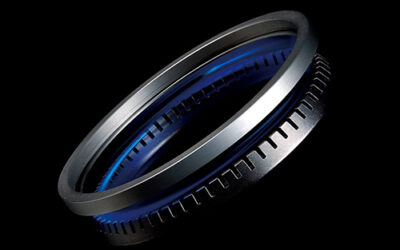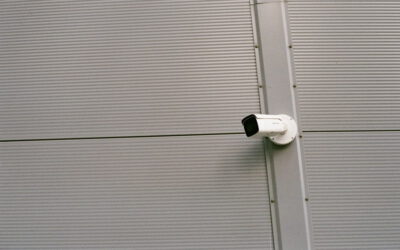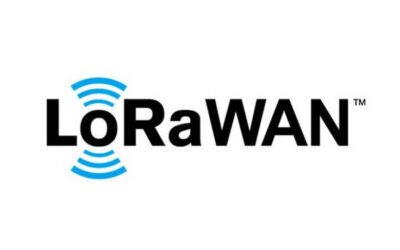Thermal Imager: Where Traditional Camera Tech Falls Short
Since ancient times one of the most important tasks of a person was to ensure safe living for themselves and their loved ones. For this purpose, in the middle ages were built a lot of monstrous castles and fortresses which could be protected for months from waves of opponents. After all, the survival instinct was fundamental to prolong the existence of the entire states.
Times have changed. The word “Security” now means not only the ability to exist calmly and without threats, but also the provision of personal space and personal freedom. Also, one more thing was added to this concept — Cybersecurity, which is now one of the fastest-growing areas of the IT-sphere. But in this article, we will talk about the simplest type of security.
What Is Security
Security — the state of protection of vital interests of the individual, society, and the state from internal and external threats, or the ability of an object, phenomenon, or process to be preserved under destructive influences.
Security — conditions in which a complex system is located, when the action of external and internal factors does not lead to processes that are considered negative in relation to this complex system in accordance with the existing needs, knowledge, and perceptions at this stage.
Based on these terms, we understand that security today is a combination of many factors that already protect not only the most important human value — life, but also ensure the order of freedoms and personal space.
The world of technology has also helped to develop an entire industry that helps people more efficiently and less resource-intensive to monitor compliance with the safety standards that each state regulates. In this case, there are many assistants who have been open to the public since the 50s. They are surveillance cameras, infrared and ultrasonic sensors, alarm systems, thermal imagers and many other devices that were previously developed by the military industries of different countries. Specifically, we would like to pay attention to a more advanced version of all of the above — Thermal Imagers which serve both separately and in a system with the elements above.
The History Of Thermal Sensors
The thermal imaging technology was originally developed for the defense industry more than 50 years ago to help the military branches identify heat sources, vehicles and other targets at night, and in challenging conditions.
After the Gulf War, production volumes had increased, which meant the cost to develop this technology had dropped. The U.S. Government declassified the technology, allowing it to be licensed to various manufacturers to design solutions for additional market use cases.
The first to be leveraged were firefighter municipalities, followed by law enforcement and many other commercial and industrial applications, all lining up to take advantage of this technology.
About Technology
Thermal imagers use a combination of specialized sensors and lenses to convert infrared energy, or heat emissions, from the objects it monitors into visible light colors or shades to show temperature variances. Since the human eye can only see in visible light-scale, this gives a deeper insight into what the broader spectrum of infrared energy provides for scene content.
In harsh conditions (such as fog, smoke, dust, snow, rain) or complete darkness, thermal imagers perform much better than their direct “ancestors” — secure cameras, that cannot detect heat signatures. So that`s why thermal imagers are becoming more and more common in the security industry. And that`s why we want to tell a little story of creating our own type of Thermal Imager.
Project Workflow
The main idea was to get the user informed on any alive or heated objects around using the device. We designed the device which will distinguish thermal traces of people and heated objects at close and medium distances. This configuration can help in the security system of a house or a large-scale enterprise, or for monitoring fires on the territory.
Our Tech-Stack decided to use a specular thermal imaging 120 mm lens, which enables the user to distinguish the thermal traces of people and heated objects at close and medium distances.
The first step was to design a PCB layout which will be able to perform the intended functions, including the use of the following technologies:
- Flir Muon, with a resolution of 320×240;
- FX3 (parallel to USB converter)
- TI FPD3 (to increase the distance)
After this stage, the next one was to develop high-quality firmware for FX3. In this stage, we made a path from designing concept and UI to coding the main algorithms.
At the end of our work, the user got an affordable device with unique features and accurate result on distant areas which can define any alive and heated objects in the area around over 1000 meters despite such obstacles as snow, bushes or trees.
If you have an idea that has not left your brain for a minute for a long time, ADUK can help you with any question of implementation. All you have to do is write to us in the contact form and see how your dreams come true in a real portable, eco-friendly and very useful device with the help of our specialists. You can write us if you need firmware development or embedded hardware development services.
Recent Posts
- What Is an Exoskeleton Suit?
- Where can you use an ultrasonic motor?
- Smart Camera: System That You Can Use for a Wide Variety of Purposes
- Why Is the Smart Toothbrush Better Than a Regular One?
- Microcontrollers: An Integral Part of Embedded Hardware
- Air Quality Monitoring System: Why It’s So Important in Modern Realities





